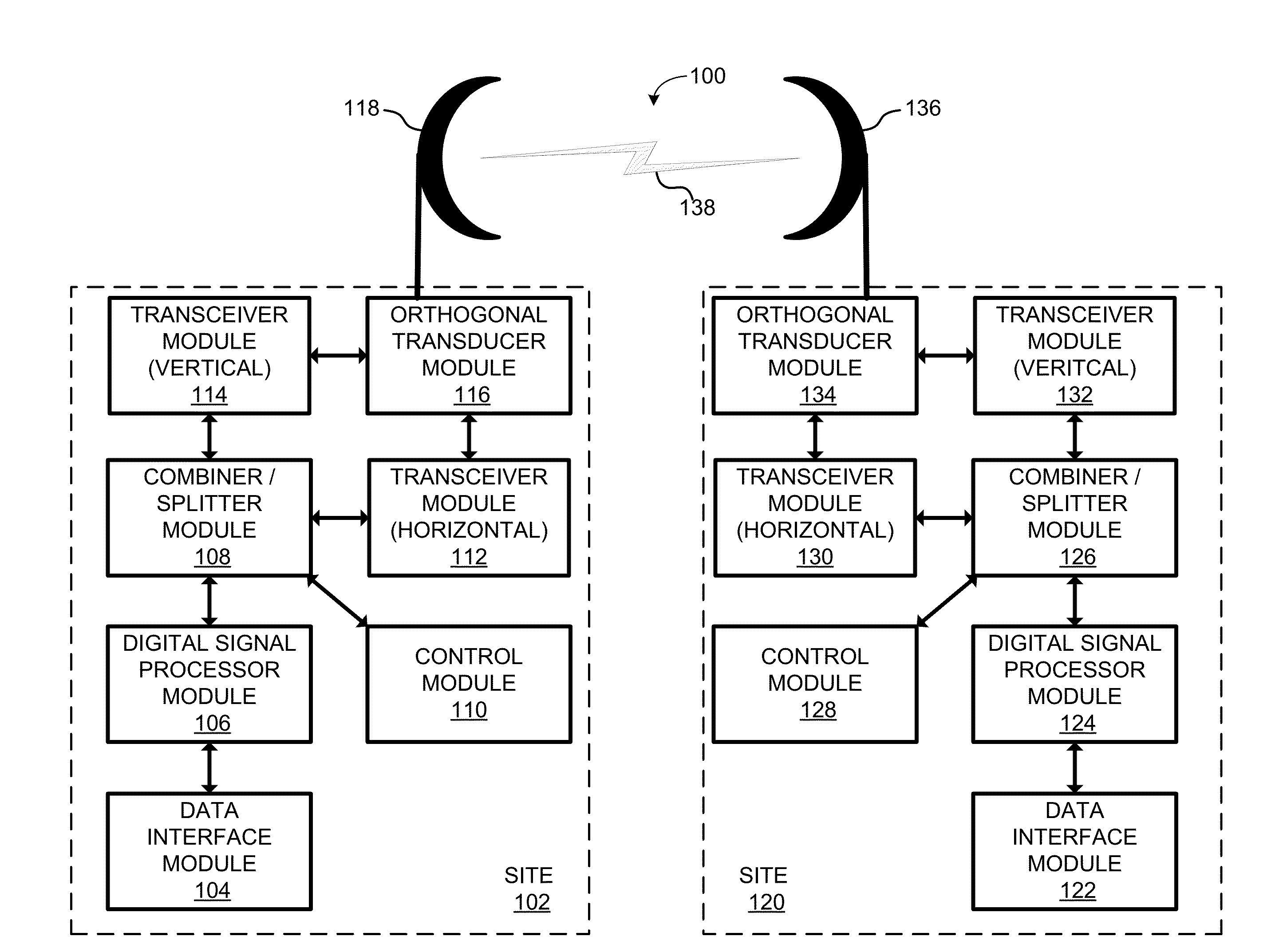Systems and Methods for Cancelling Cross Polarization Interference in Wireless Communication Using Polarization Diversity
a technology of cross polarization interference and wireless communication, applied in the field of wireless communication systems, can solve the problems of weak, yet undistorted signal, fading is a common impairment at quality and reliability, and achieve the effect of improving signal quality and signal reliability
- Summary
- Abstract
- Description
- Claims
- Application Information
AI Technical Summary
Benefits of technology
Problems solved by technology
Method used
Image
Examples
Embodiment Construction
[0013]According to various embodiments, systems and methods are provided that improve signal quality and signal reliability over short and long-distance wireless communication using polarization diversity. In particular, some embodiments use polarization diversity on a wireless channel to address and compensate for fading conditions on a wireless channel, such as non-frequency selective fading (also referred to as power fading, attenuation fading, and flat fading) and frequency selective fading (also referred to as multipath fading and dispersive fading). For example, some embodiments utilize a horizontal signal and a vertical signal on the same wireless channel when wirelessly communicating data between a transmitter and a receiver to address a fading condition over a wireless channel.
[0014]By utilizing polarization diversity, various embodiments are able to provide improved wireless communication availability and reliability without the need for: (1) adding extra antennas; (2) obt...
PUM
 Login to View More
Login to View More Abstract
Description
Claims
Application Information
 Login to View More
Login to View More - R&D
- Intellectual Property
- Life Sciences
- Materials
- Tech Scout
- Unparalleled Data Quality
- Higher Quality Content
- 60% Fewer Hallucinations
Browse by: Latest US Patents, China's latest patents, Technical Efficacy Thesaurus, Application Domain, Technology Topic, Popular Technical Reports.
© 2025 PatSnap. All rights reserved.Legal|Privacy policy|Modern Slavery Act Transparency Statement|Sitemap|About US| Contact US: help@patsnap.com



